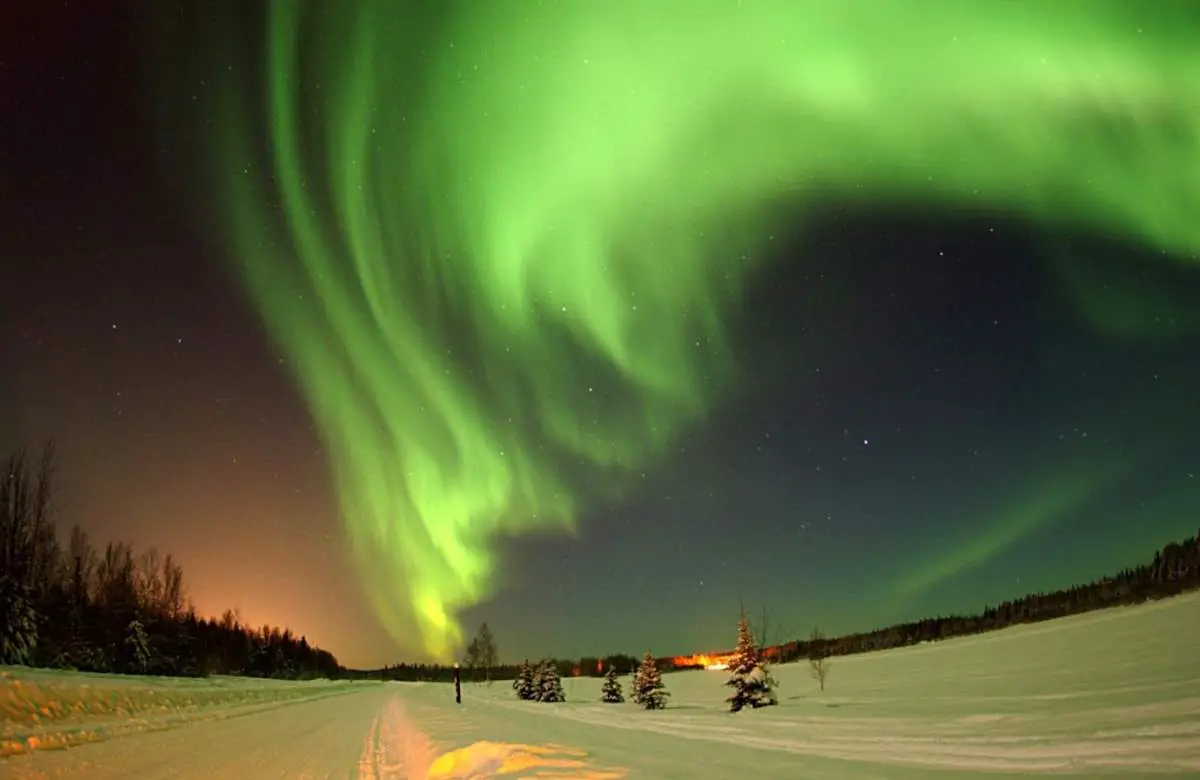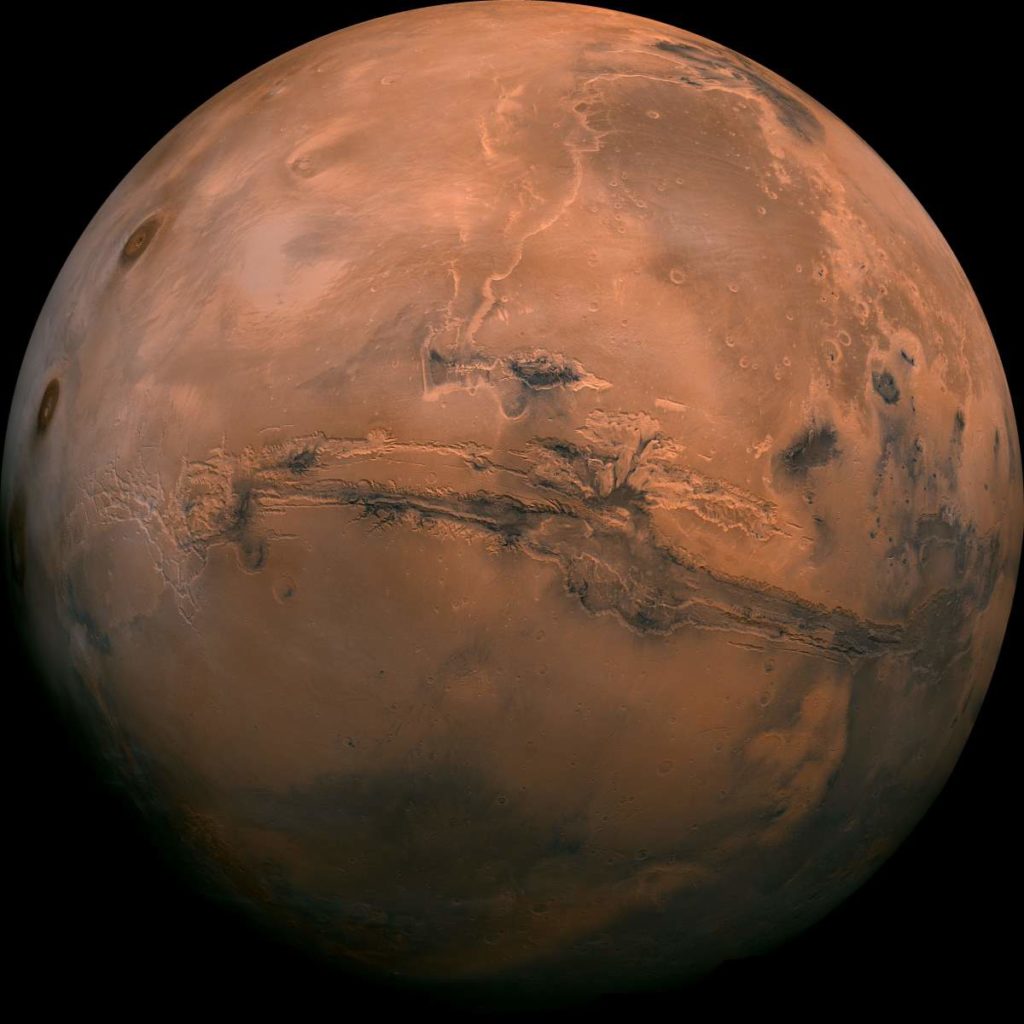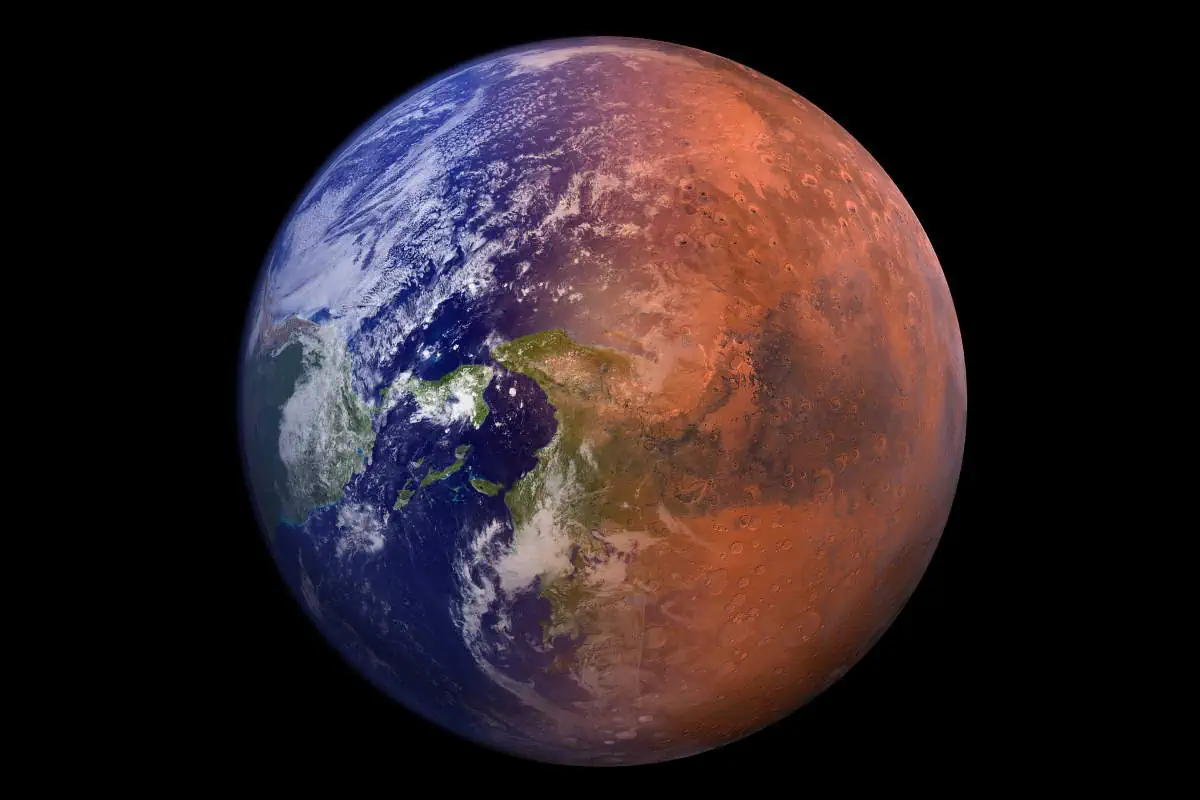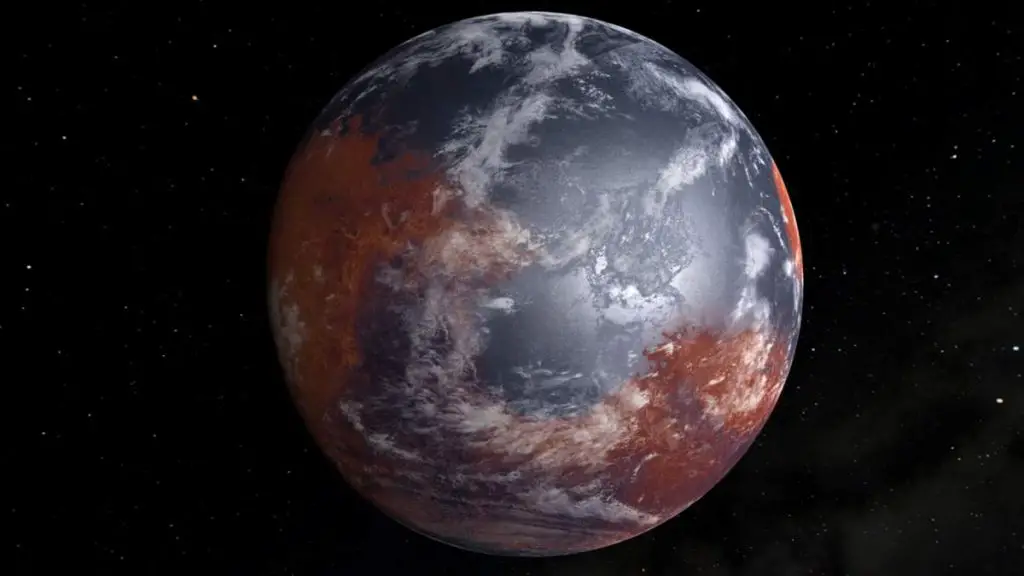Mars is now a cold and extremely arid desert that is constantly bombarded with deadly solar radiation. It has a very thin atmosphere (it’s really thin, it is practically almost a vacuum) and no liquid water. But that was not always the case. Billions of years ago, Mars had liquid water on its surface. It had oceans, lakes, and rivers. So, how Mars died? How did it lose its atmosphere and water and become the extremely cold, arid desert we know now? Here’s a short video by BBC Earth Lab explaining the death of Mars.
How Mars died
Our Sun’s outer corona burns at a scorching 1 million °C (more than 1.8 million °F) and releases a barrage of charged particles that travel around 250-750 kilometers per second (155-465 miles per second). These charged particles are called solar wind.
Solar wind would strip away our atmosphere if Earth didn’t have a magnetosphere (see notes 1), created by our planet’s strong magnetic field. When those dangerous charged particles begin to get close to Earth, they get diverted around Earth by interactions with that magnetic field.
During big space weather storms, which are ultimately caused by activity on the Sun, ions – electrically charged atoms or molecules – can be pushed deep into Earth’s magnetosphere in a series of impulsive events. These particles carry electromagnetic currents that circle around the planet and can even dramatically distort Earth’s magnetic field.
That protection keeps solar wind and other ionizing radiation off of the Earth’s surface. All the life on Earth (see: 8 Things that make Life on Earth Possible) is safe inside the “shell” of this magnetic protection.
Solar winds strip atmospheres of planets with a weak or non-existent magnetosphere. The Earth’s magnetosphere creates a protective bubble against solar wind around the atmosphere and prevents it from being stripped away by the charged particles of solar wind.
We can even see this protective bubble on work in form of auroras.

An aurora is a stunning display of the Earth’s magnetic field in action.
How Earth’s magnetic field created?
Scientists know that today the Earth’s magnetic field is powered by the solidification of the planet’s liquid iron core. The cooling and crystallization of the core stir up the surrounding liquid iron, creating powerful electric currents that generate a magnetic field stretching far out into space. This magnetic field is known as the geodynamo (see notes 2).
Mars’ magnetic field
Just like Earth, Mars once had a molten metallic molten core generating a magnetic field around the red planet. This magnetic field was protecting its atmosphere and the seas below. We know that because the oldest rocks on Mars show strong evidence of a once-powerful magnetic field.
But, that dynamo generating Mars’ protective magnetic field has stopped billions of years ago.
Younger rocks on the red planet (younger than 3 billion years old) show no evidence of a magnetic field. Half a billion years after it formed, Mars’ magnetic field died out.
Without that shield, Mars’ atmosphere, including all the atmospheric components that make water (hydrogen and oxygen) started to be stripped away by the solar wind.
Billions of years later, today, Mars has a very thin atmosphere: the atmospheric pressure on the Martian surface averages 600 pascals (0.087 psi; 6.0 mbar), about only 0.6% of Earth’s mean sea level pressure of 101.3 kilopascals (14.69 psi; 1.013 bar).
Why did Mars lose its magnetic field?
The answer to why did Mars lose its magnetic field lies at the beginning of its story.
4.6 billion years ago, when the solar system’s planets were forming from the dust clouds circling the Sun, early differences between the Earth and Mars set the young planets on very different paths.
Mars formed further from the Sun., where there’s less rocky material to build a rocky planet. It’s actually the farthest rocky planet in our solar system to the Sun.
So, Mars is much smaller than Earth. It has a radius of 3,389.5 km (2,106 miles), while the Earth’s radius is 6,371 km (3,959 miles). Its mass is only %10.7 of Earth.
If a planet gets this small, and if it’s so far away from the Sun, it just freezes. So, Mars’s molten liquid iron core just frozen out. With it, the dynamo generating its magnetic field died.
That’s how Mars died.

Will Earth die someday how Mars died?
The good news for us is that the magnetic field here on Earth shows no sign of ceasing anytime soon. The dynamo in the core may do things like flip and reverse, swapping north-and-south magnetic poles, but we should continue to stay protected from the solar wind far into the foreseeable future – for at least a few billion years.
Notes
- A magnetosphere is a region around a planet created by the planet’s magnetic field.
- In fact, multiple lines of evidence have shown that the Earth’s magnetic field existed at least 3.5 billion years ago. However, the planet’s core is thought to have started solidifying just 1 billion years ago, meaning that the magnetic field must have been driven by some other mechanism prior to 1 billion years ago. Noww scientists are trying to pin down exactly when the Earth’s magnetic field formed. Determining exactly when it started could help scientists figure out what generated it to begin with.
Sources
- Solar Wind on Wikipedia
- Magnetosphere on Wikipedia
- “Origins of Earth’s magnetic field remain a mystery” on the Massachusetts Institute of Technology (MIT) website
- How Many Elephants are Left in the World in 2025? - August 17, 2025
- Moon Landings: All-Time List [1966-2025] - February 2, 2025
- What Is Max-Q and Why Is It Important During Rocket Launches? - January 16, 2025


